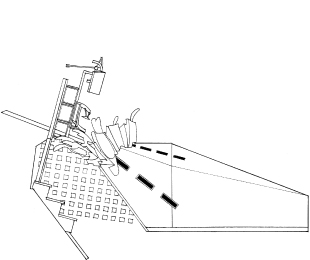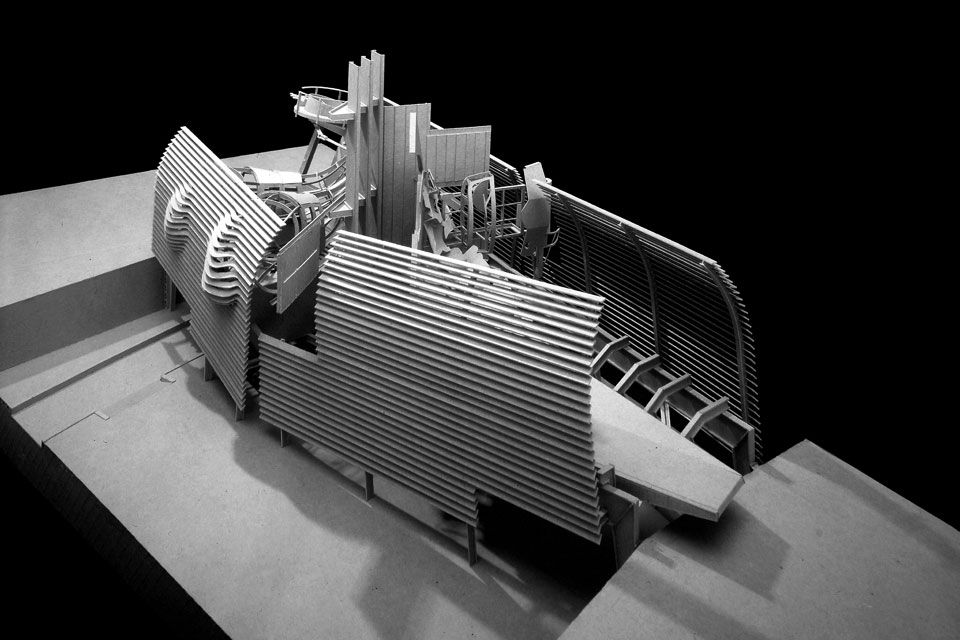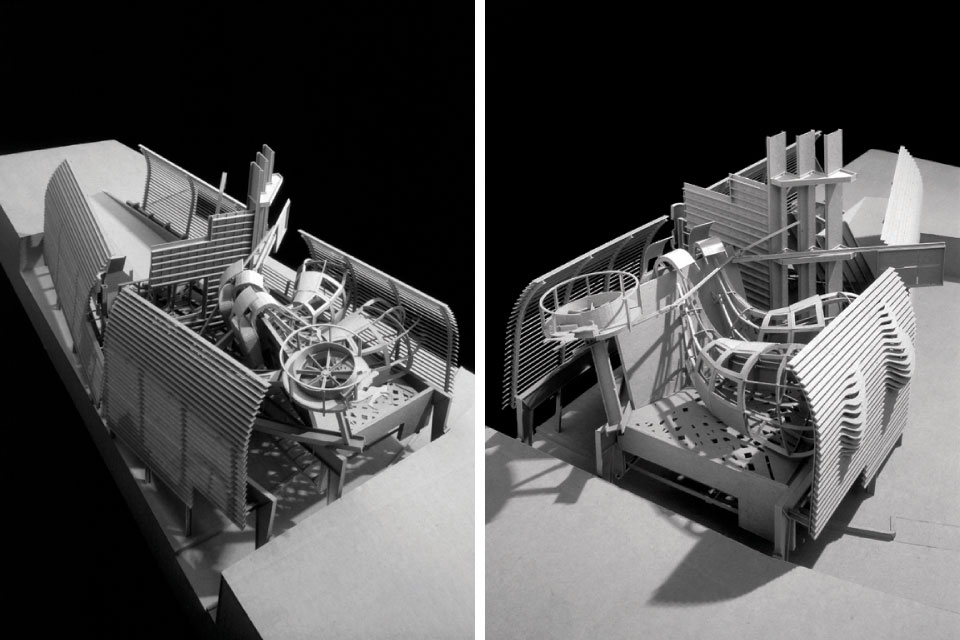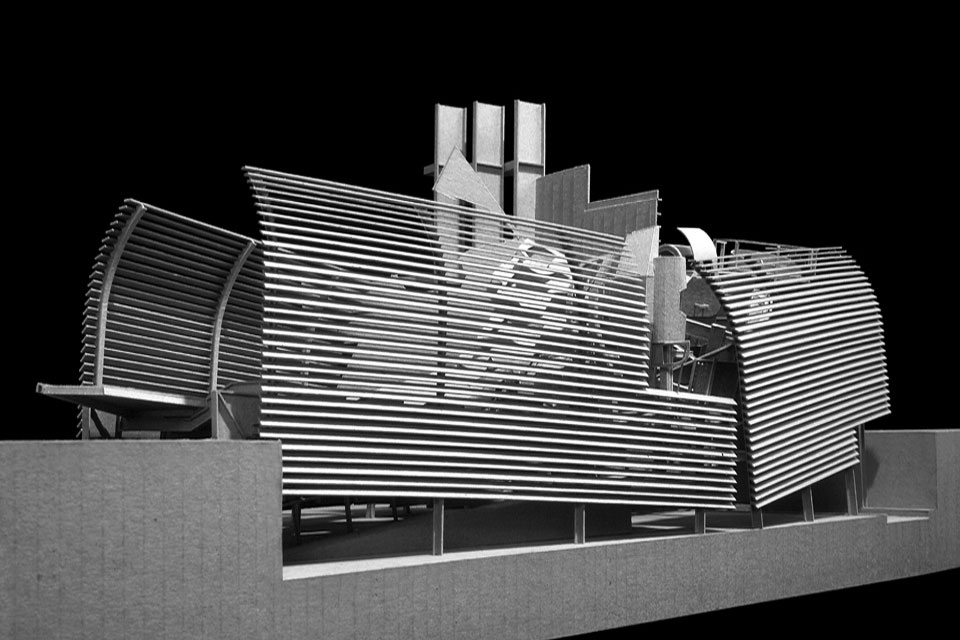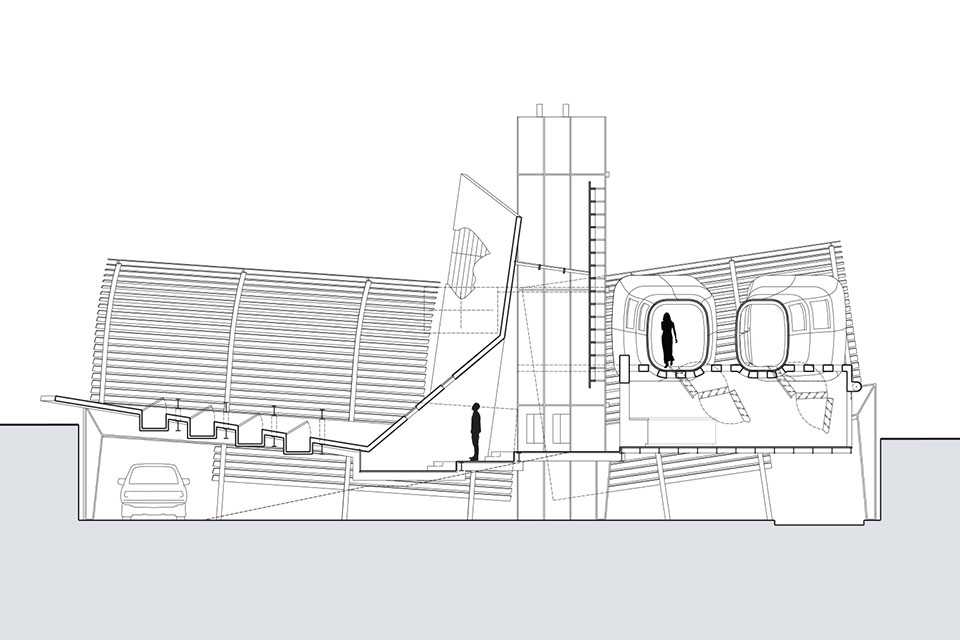Castaway begins with the premise that the gesture to privatize the experience of the exterior world into the space of the domestic is a critical impulse in the formation of the suburban house. The escalating availability of information through television, the internet and printed media makes any place, time, and thing accessible without ever leaving the privacy of the home. The tendency to collect and over-consume, whether it be material or virtual things, effectively displaces the program of the house. Less a dwelling for the homeowners than a receptacle for the things they own and long for, the house’s internal pressures continue unseen; it is a passive container that belies its real and imagined contents.
In “Learning From Levittown”, Robert Venturi identifies the exterior of the suburban house as a surface on which the dreams of the past and future are projected. From the wagon wheel and faux carriage lamps on the front of the home, to the simulated picturesque landscape that organizes the neighborhoods, the desire for acquired authenticity remains applied. Having always been in conflict with its internal and external influences, the suburban house has yet to find its identity.
The project attempts to reveal and intensify these displacements between inside and outside, private and public life by drawing both the real and imagined contents of the house, as well as the field that surrounds it, into architectural production. More than a symbolic or referential strategy, the process unlocks new conditions of form, program, and scale through a system of grafting and recombination. The self-storage facility has emerged in the suburbs as a program for a temporal but seemingly permanent space for one’s accumulated belongings. Not solely used as transition space between moves, it has become a container for excess consumption that the home can no longer sustain. As part of the project, it is proposed that a self-storage facility be integrated into an existing suburban neighborhood in White Plains, NY. Castaway, a dwelling for a family of four, occupies one of the metal sheds that constitutes this new infrastructure.
“There are men from whom nature or some peculiar destiny has removed the cover beneath which we hide our madness. They are like thin skinned insects whose visible play of muscles seems to make them deformed, though in fact, everything soon returns to its normal shape again. Everything which remains within us becomes action in Krespel.” – E.T.A Hoffman, Councilor Krespel
